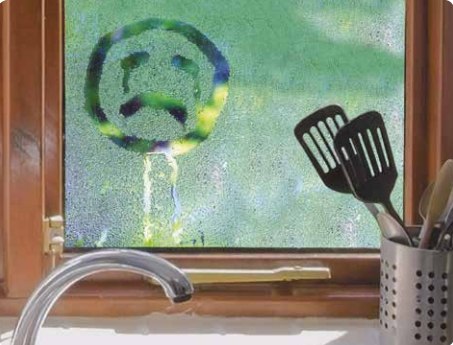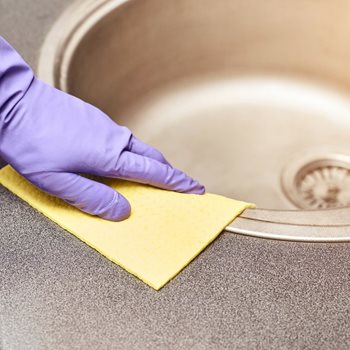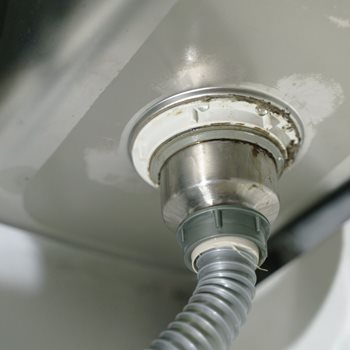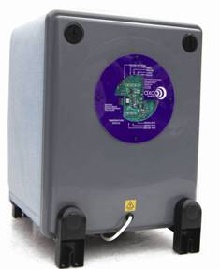Top 6 tips to reduce condensation and mould in the home
Date: 26 September 2023

Condensation and mould can cause serious damage to your property. The following 6 top tips from BEAM Ventilation Experts can help reduce condensation and mould in your home.
Mould needs moisture to survive and is often present alongside condensation. Mould growth in the home is never a good sign. It is a fungus that can be harmful to both your home and your health if left to grow and spread.
Removing condensation and/or mould already present in the home is a good starting point, however this will not stop either one from coming back. For a permanent change, it is essential to control the moisture levels within your home and to ensure adequate ventilation throughout.
Find out how a Beam Positive Input Ventilation System (PIV) can help.
Here are 6 simple ways to prevent condensation and mould in your home:
1. Keep your home dry and well ventilated
Condensation is caused by excess moisture in the air and mould flourishes in these damp environments; therefore, one of the best ways to prevent their growth is ventilation. Air flow in and out of the home is essential to reduce moisture levels and provide a cleaner, healthier indoor air environment.
Suitable for new & existing homes, the AXCO loft mounted Positive Input Ventilation (PIV) unit gently ventilates the home from a central position in the landing/hallway, helping to clear condensation and mould growth. Purchase online today or get in touch with a member of our team for additional advice.
2. Don’t dry clothes indoors
Drying your washing indoors over radiators increases moisture levels within the home, which can lead to condensation and mould. Condensation problems intensify during the winter months when indoor drying is more frequent. We recommend that you dry your clothes outdoors or using a tumble dryer that is vented outside.
increases moisture levels within the home, which can lead to condensation and mould. Condensation problems intensify during the winter months when indoor drying is more frequent. We recommend that you dry your clothes outdoors or using a tumble dryer that is vented outside.
Top tip: if drying your washing outside isn’t an option, try using a room that is well ventilated, with an open window for example, to allow the moisture to escape outdoors.
You may like to read - 5 Signs Your Home has a Condensation Problem
3. Keep doors closed
When cooking or showering, humidity levels in your kitchen or bathroom dramatically increase. To prevent this damp air from spreading throughout the rest of your home and causing condensation, it is advisable to keep internal doors closed. Remember also to turn on extract fans and cooker hoods if you have them so that some of the moisture is vented outside.
Top tip: Taking the steps above will reduce condensation but it will not rectify the issue fully. Without adequate ventilation, condensation may still settle on the walls, ceilings, and other surfaces areas with high levels of humidity such as kitchens and bathrooms and mould could grow.
4. Clean mould and condensation away
If you notice condensation on your windows, it is important to dry this aw ay to prevent mould forming. Similarly, if there is already mould in your home, take steps to remove from all affected surfaces it so that it doesn’t spread any further.
ay to prevent mould forming. Similarly, if there is already mould in your home, take steps to remove from all affected surfaces it so that it doesn’t spread any further.
1. Walls - wash down with a mould removal product and dry them thoroughly.
2. Soft furnishings – have them professionally dry cleaned.
3. Badly affected items - Throw away any items that have been damaged beyond repair.
4. Leave your windows open so the room dries quickly.
5. Vacuum the room to ensure no moisture soaks into the floor.
Top tip: Mould spores can be harmful to your health so remember to wear a face mask and gloves when using products to remove it from your home.
You may like to read - The Effect of Mould on Your Health and Home
5. Clear the clutter – aid air circulation
Areas in the home where there is a lot of clutter or items packed tightly together can be a key source of mould as the air circulation is restricted. Check your cupboards, drawers and wardrobes - if they are overfilled, try having a clear out or moving some of their content elsewhere. This will allow the air to circulate freely inside.
Top tip: A stale or musty smell is a sure sign that your cupboards are overfilled!
6. Check for leaks
As we have learned in this blog, mould loves moisture! It can often be found in places that have experienced leaks or excess moisture build up. These areas may not be as obvious as a ceiling or around a window, so it is worth checking in other areas of the home as well.
moisture! It can often be found in places that have experienced leaks or excess moisture build up. These areas may not be as obvious as a ceiling or around a window, so it is worth checking in other areas of the home as well.
Top tip: Check for leaks under your sinks, behind toilets, around your washing machine and dishwasher and under radiators. These are all common places where leaks can occur and mould can begin to grow and spread.
The Ultimate Solution
Proper ventilation is key to preventing condensation and mould, ensuring there is adequate air flow throughout your home. For existing homes with condensation and mould issues, we recommend a Positive Input Ventilation System (PIV).
This compact condensation control unit is usually placed in the loft-space above the hallway. It provides fresh filtered air throughout the home which displaces the stale moist air which could lead to condensation and mould.
Speak to the Experts
If you are having problems with condensation and mould in your house Get in Touch with a Beam Expert who can help.